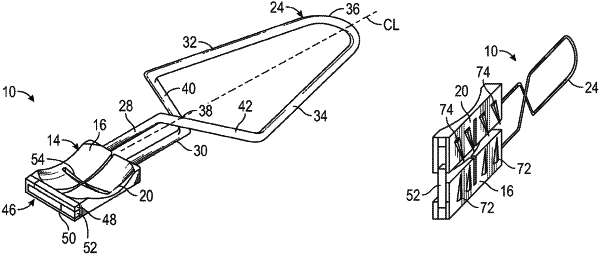| CPC A61B 17/083 (2013.01) [A61B 17/0482 (2013.01); A61B 2017/081 (2013.01)] | 9 Claims |

|
1. A surgical instrument for clamping a target structure, comprising:
a clamp having a first jaw forming a first clamping surface, and a second jaw forming a second clamping surface that opposes the first clamping surface; and
a handle connecting the first and second jaws wherein the handle has a resilient bias that resiliently biases the first clamping surface and second clamping surface against each other into a substantially closed relationship for clamping the target structure; and
an alignment guide that maintains the first and second clamping surfaces in the substantially aligned relationship to one another to resist torque that would twist the first and second clamping surfaces out of the aligned relationship, the alignment guide comprises interdigitating alignment members carried respectively by each of the first and second jaws;
wherein the handle is compressibly movable to overcome the resilient bias and open the clamp by moving the first jaw and/or the second jaw to an open position while maintaining the first clamping surface and the second clamping surface in a substantially aligned orientation relative to one another;
wherein the clamp has an inferior surface forming respective inferior surfaces of each jaw for resting on tissue to be clamped, and an opposing superior surface for facing upwardly away from the tissue to be clamped, wherein the clamp further comprises compression prongs that extend downwardly from the inferior surface of each jaw for extending toward an incision to be closed.
|